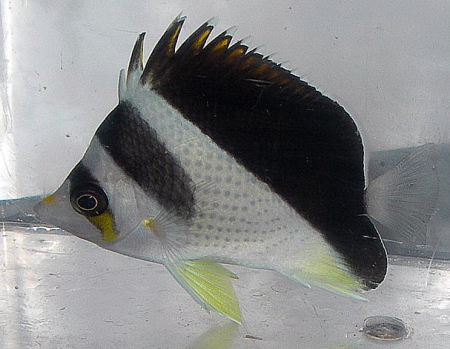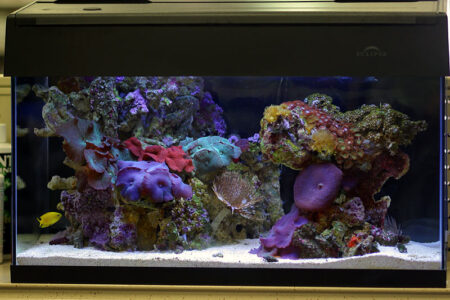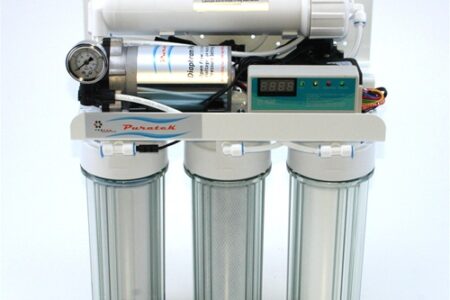Fukui Point – Bunaken National Park
Fukui point is easily one of the best coral dives in the Bunaken National Park. The shallow areas are covered in huge colonies of healthy branching corals, and the reef slopes have some of the most expansive fields of plating coral we’ve ever seen.
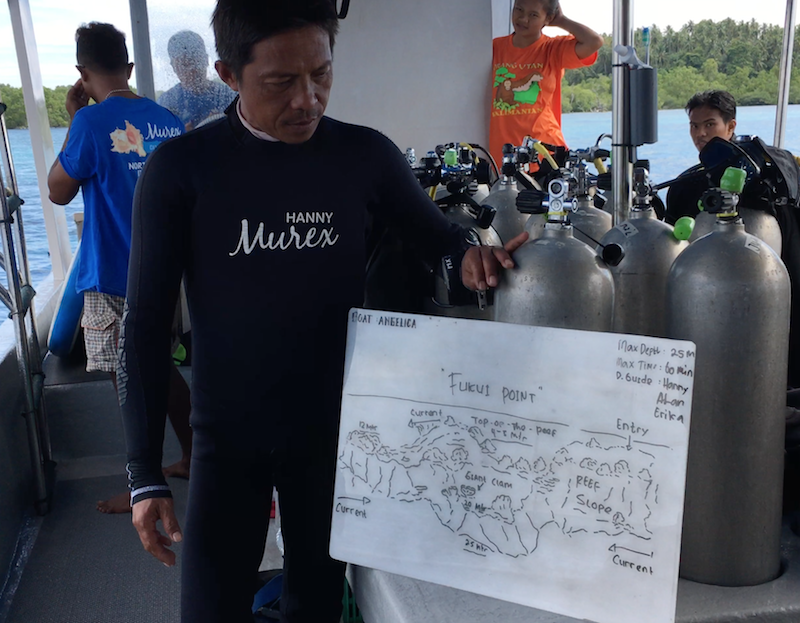
Part 1 – Plating Corals
When you drop into Fukui point the first place you will go is down the reef slope. You will quickly be met with layers of plating coral as far as the eye can see. At first glance, you might think all these corals are the same but there is a distinct line around 15m where one species ends and another begins.
There are two dominant species of corals, with a few patches where smaller colonies have carved a life on the reef.
Echinopora
At the top of the reef, you start to find thin plating Echinopora lamellosa corals. Without going diving with a measuring tape, a rough guess would be this colony covers 8m of vertical space and 50+m of horizontal space. We will continue to update this estimate on the second trip to Fukui!
Echinopora forms thin delicate plates that grow quickly and to an impressive size. Echinopora lamellosa like the one at Fukui point is exclusively a plating species. There are however other Echinopora corals which form tubes or branches, some even have branches growing from the centre of plates.
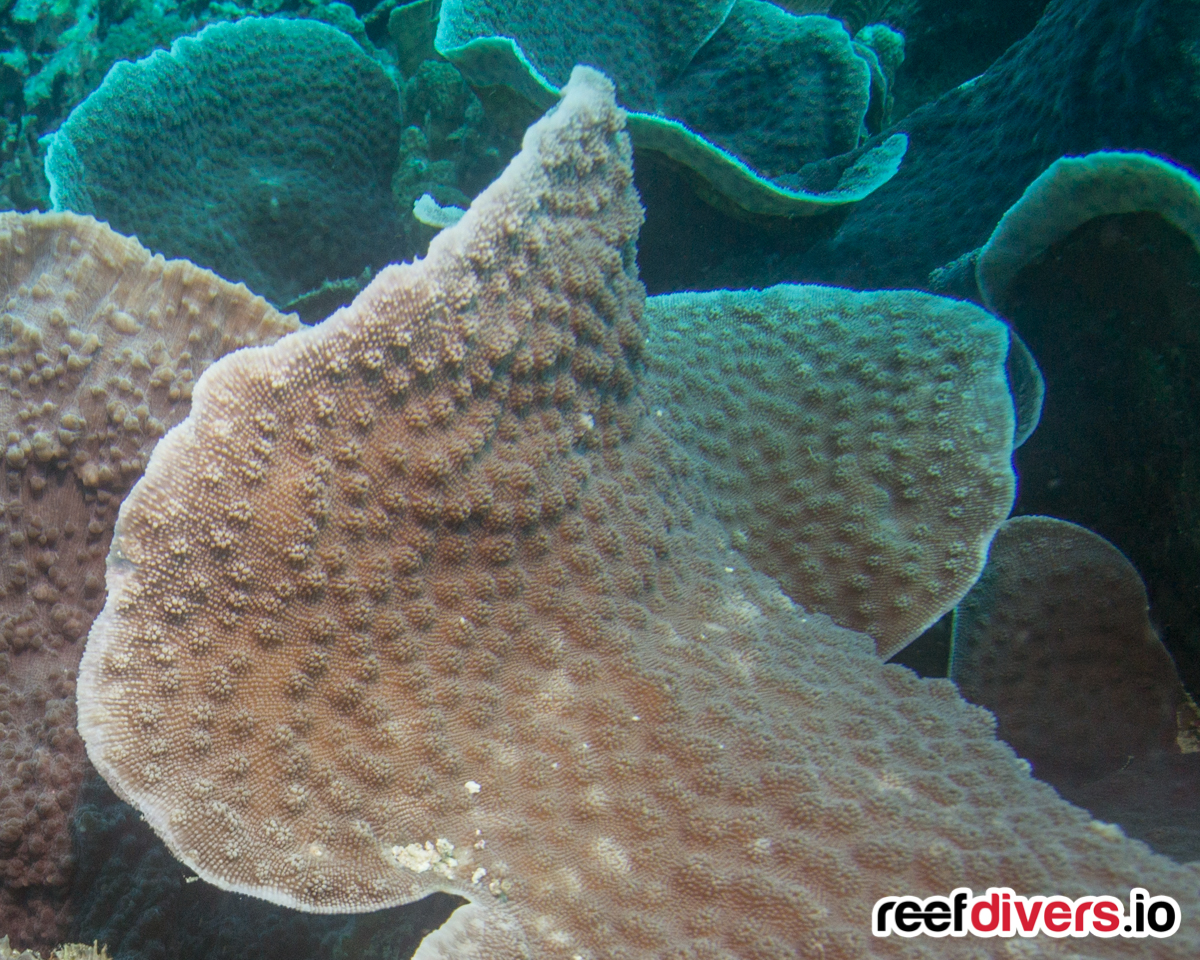 The way to distinguish Echinopora is by looking at the corallites, which grow as little round domes on the surface of the coral. These corallites are often spaced wide apart and the plates lack any visible ridges or valleys.
The way to distinguish Echinopora is by looking at the corallites, which grow as little round domes on the surface of the coral. These corallites are often spaced wide apart and the plates lack any visible ridges or valleys.
Near the lower edges of the Echinopora colonies, we found a few plates being guarded by damselfish. If you look closely at the coral you can see little white patched where the fish have eaten away at the coral tissue. Damselfish are algae farmers, and they clear these patches to grow their own food.
Mycedium
Around 13-15m the tiered Echinopora plates give way to Mycedium. At this depth, you can find both Mycedium elephantotus and Mycedium robokaki. Mycedium was one of the first coral we learned to identify, and you can read one of our very first articles here, about this common coral species.
Mycedium coral can tolerate lower light, and they also have larger polyps than Echinopora, this allows them to survive on the lower reef slope. In some places, the Mycedium colonies extend to 20m depth, following the same contours at the plating corals above.
You can recognize Mycedium by the inclined cup shaped corallite that always faces away from the centre, towards the edge of the coral colony.
Competition on the Slopes
It’s a tough life for other corals trying to out-compete the fast-growing Echinopora. However, in the band of reef between the dominant species, you can find a few clusters of plating coral eeking out a living on the reef.
Some that stand out are Pachyseris, Oxypora, and Turbinaria. 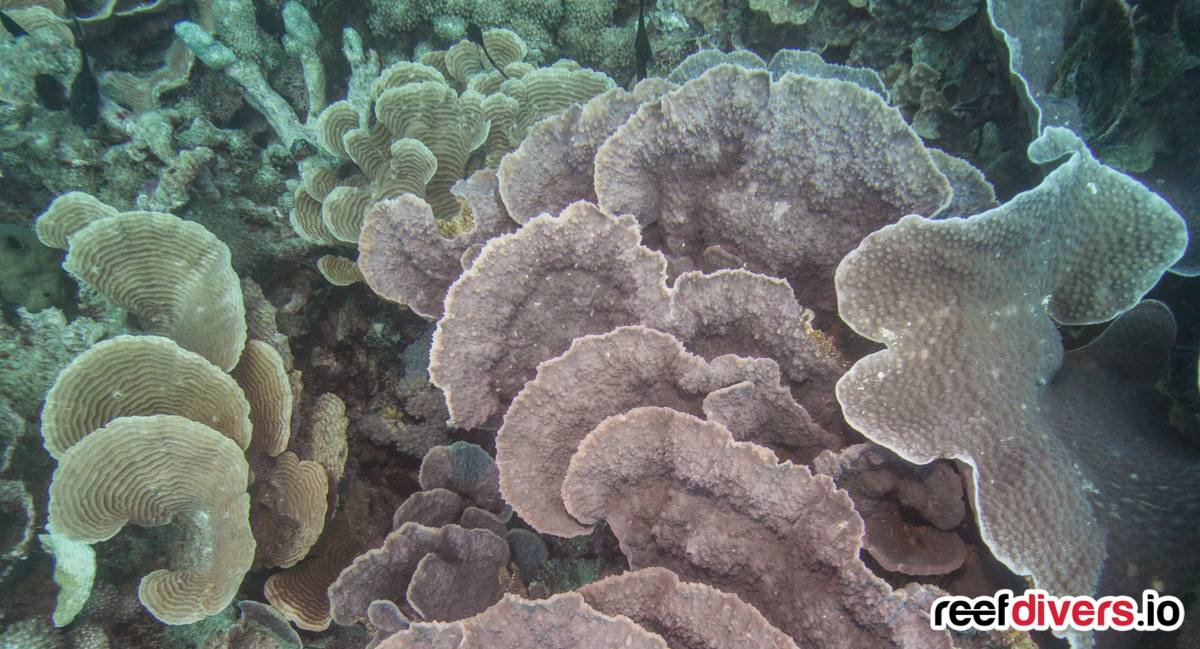
We found a few large colonies of yellow Pachyseris plates near the edges of the Echinopora stand. This coral has horizontal ridges and the corallites are aligned in neat rows between the ridges.
There were a few colonies of Oxypora that you can recognize from the crinkled texture. The colony is a grey colour and the polyps are a slightly different colour from the rest of the tissue. The texture of the coral is covered in small irregularly spaced bumps.
Turbinaria is a hardy plating coral with tubularly shaped corallites. The colonies in Fukui reef slope have a very smooth surface with small corallites. The corals are found in both grey and yellow.
In part 2 of this Fukui coral spotting series, we will take you to the top of the reef slope where you find a colourful mix of Branching Acropora species, and some rough and tumble roolollith corals.
Thanks to Murex Dive Resorts for showing us around Northern Sulawesi. Do you have a favorite dive site in Bunaken? Let us know in the comments.


